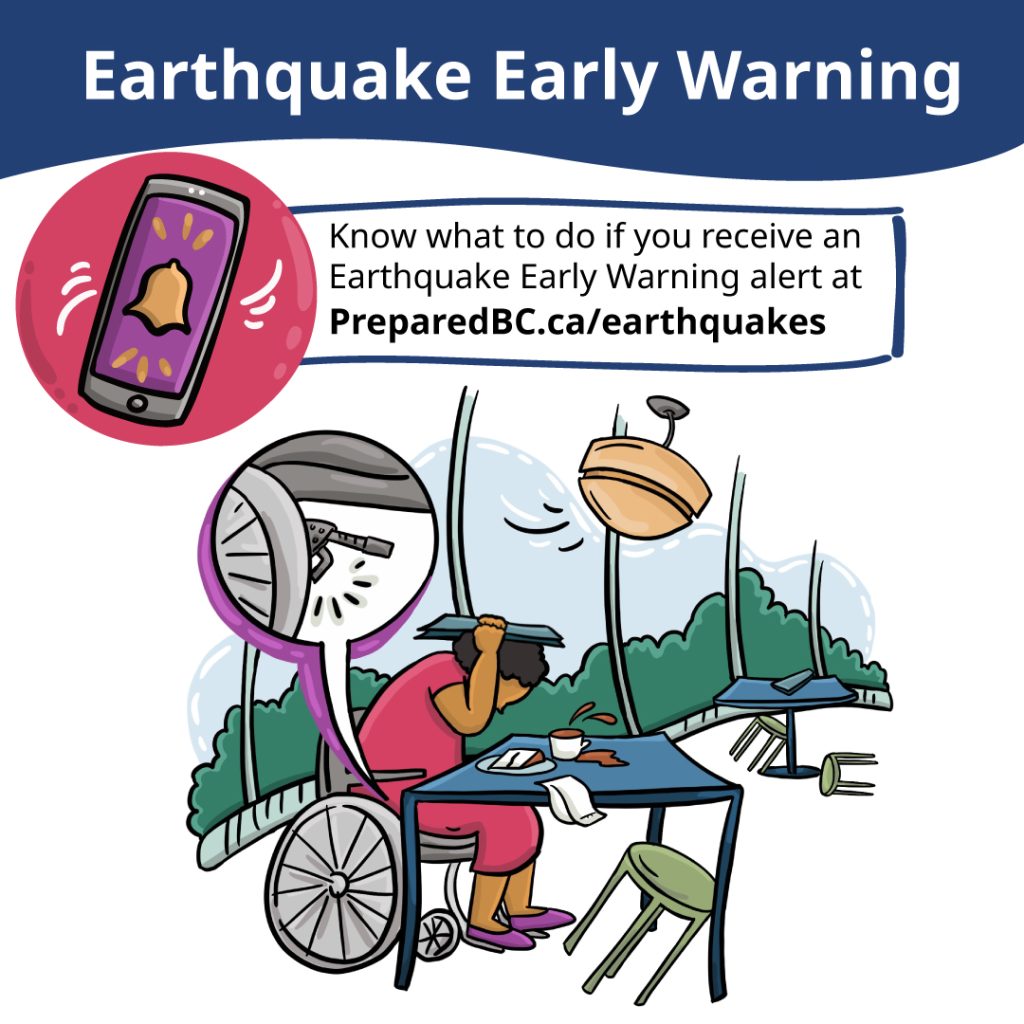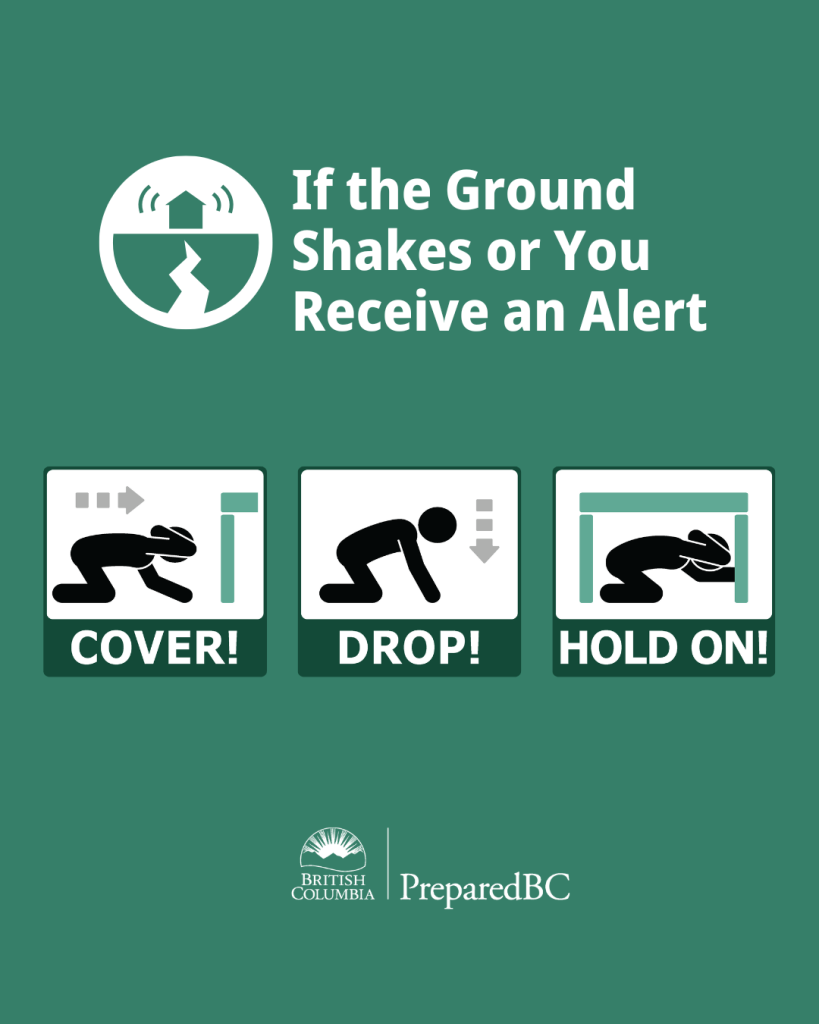Did you feel an earthquake in late February or early March? There was an earthquake on February 21 that was felt on the South Coast and southern Vancouver Island, and one on March 3 that was lightly felt around Victoria and Vancouver. These earthquakes were a reminder to many folks that B.C. is a seismically active province. Did you know that over 4,000 earthquakes are recorded in the province each year?
Thankfully, neither of those felt earthquakes caused any damage. However, they did spark some great questions about earthquake preparedness and the Canadian Earthquake Early Warning (EEW) system.
Some people in B.C. received an EEW alert on February 21. Let’s talk through some of the most common questions the PreparedBC team received through social media and e-mail over the last few weeks.
If you feel the ground shaking or receive an alert, immediately Drop, Cover and Hold On
Earthquakes cannot be predicted. The EEW system, which was launched by Natural Resources Canada in 2024, can provide precious seconds of warning by detecting an earthquake immediately after it occurs.
The EEW system is designed to alert areas that will receive strong shaking which could cause harm— earthquakes generating only low levels of shaking will not produce an alert. Within EEW coverage areas, public alerts will be sent for earthquakes estimated to cause potential harm at or above magnitude 5, causing shaking at intensities of IV or greater
This means there are situations where you may feel shaking but not receive an alert.
The most important thing to remember is that your first sign of an earthquake may be the ground shaking or the sound of an alert. Either way, immediately Drop, Cover and Hold On to protect yourself and be prepared for any aftershocks.
Your location can also impact Earthquake Early Warning alerts
Sites very close to an earthquake’s epicentre may be in the event’s “late alert zone“, meaning alerts may arrive after the shaking. This is why you shouldn’t wait for an alert to take protective actions if you feel the ground shaking.
There are other factors that could contribute to one person receiving an alert while another does not. If your device is set to Wi-Fi only or you’re in a location that makes signal reception difficult, like an underground garage, you may not receive the alert.
The Earthquake Early Warning system is not an app
The EEW system is not an app. No need to sign up. EEW alerts are automatically sent through the National Public Alerting System to compatible cell phones, TV and radio. Learn more about how emergency alerting works in B.C. and check with your local government to learn how they communicate during an emergency.
Get prepared for an earthquake
- Visit PreparedBC.ca/earthquakes for preparedness tips and information
- Participate in The Great British Columbia ShakeOut every October
- Visit EmergencyInfoBC for the most up-to-date information following an earthquake, including links to information about the alert notification zone and if there is a risk of tsunami
- Check with your cell provider to learn about their policies for broadcasting emergency alerts
- If you have additional questions about the Earthquake Early Warning system, contact: eewinfo-infoasp@nrcan-rncan.gc.ca


